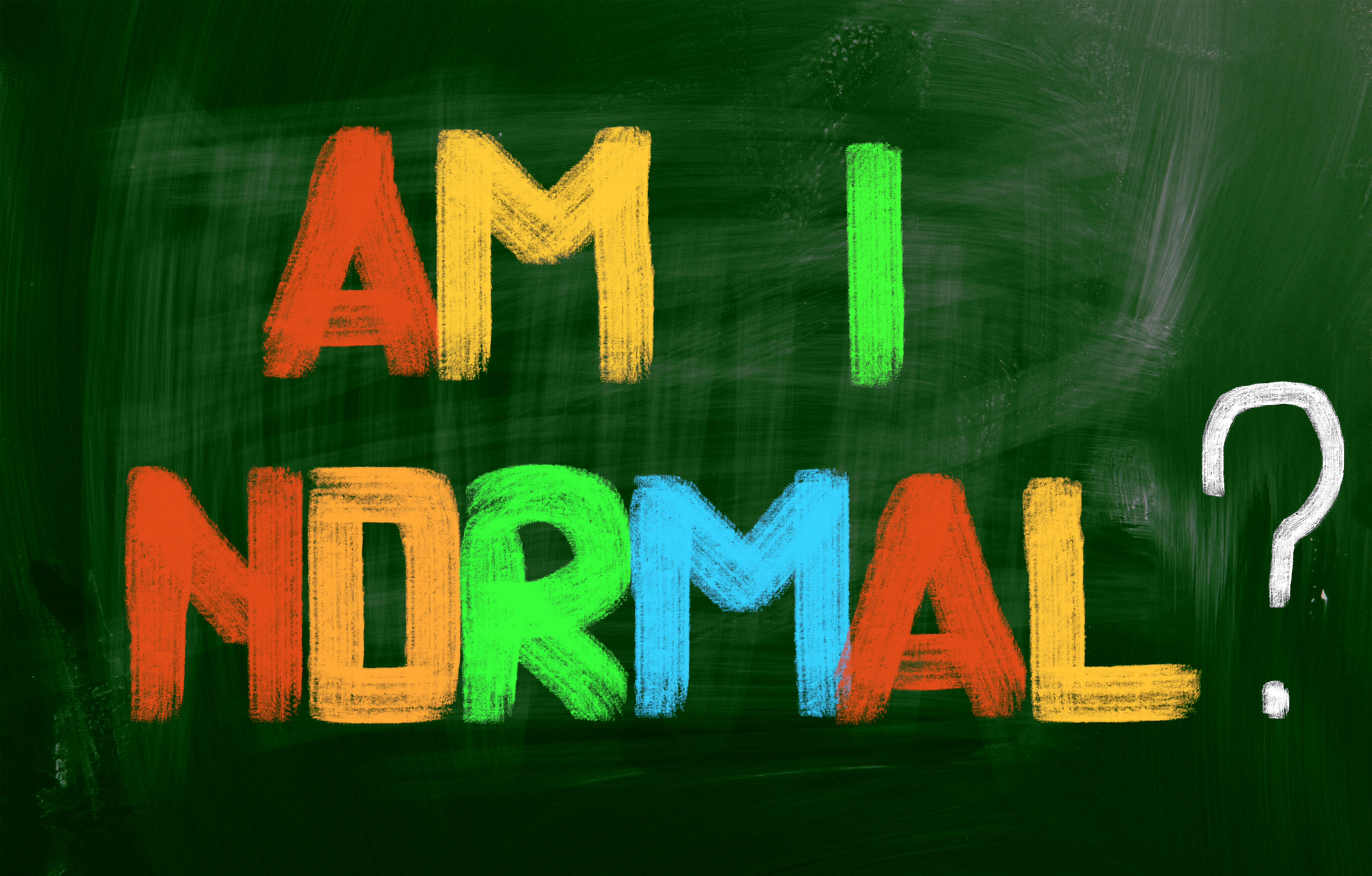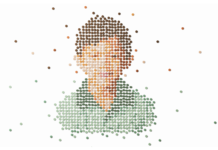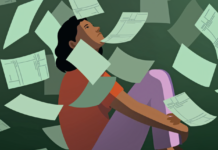EDITOR’S CORNER
Recently, Mad in America published two new pieces on research into attention deficit hyperactivity disorder — one, by Richard Sears, examining the links between ADHD drugs and cardiovascular disease, the other, by Peter Simons, emphasizing the massive overdiagnosis of the disorder.
The findings of the latter intrigued but did not surprise me, given the similarly massive overdiagnosis of so many psychiatric conditions created, defined, and disseminated by the Diagnostic and Statistical Manual. For just two examples, see past research showing that sexual minorities are being overdiagnosed as bipolar; and due to widespread screenings, depression is overdiagnosed in youth. 
Children and young people are especially at risk, given the gradual, bumpy nature of emotional and cognitive development and the tendency to categorize any strong feeling or outburst as a marker of disease requiring intervention: consider all the kids being dragged from school in handcuffs for psychiatric evaluations. In September, during our family panel discussion on helping a child through crisis, UK psychiatrist Sami Timimi called the current state of affairs as “a war on emotions” and described adolescence as “bipolar” in nature—a time when those emotions naturally intensify.
Further, he said: “When you diagnose someone with ADHD or depression or bipolar disorder, you’ve said the reason for you having these experiences is because you have this condition. So we use it as if it’s a diagnosis, as if it has explanatory power, but it doesn’t. Description can’t cause itself. You can’t say low mood is caused by depression, in the same way that you can’t say the pain in my head is caused by a headache. The description is just another way of saying the same thing.”
The problem, in both psychiatry and society at large, is that we’ve come to see the kaleidoscopic quilt of humanity through the lens of disorder, classifying differences in personality and emotional response as “symptoms.” This has shaped our sense of ourselves, both individually and as a species, in ways that cannot be minimized. If we go looking for a disorder, we’re going to find it, whether our gaze is directed at ourselves or others. It’s that simple.
Then, when we look again, we’re primed to see more. So grinds the vicious cycle of endless pathologizing that now controls what and how we perceive. Much has been written on the epidemic of self-diagnosis now plaguing social media and its effect on youth, but it isn’t just on social media, and it isn’t just youth. It’s all over the internet, targeting many. Thanks to my work and frequent Google searches, algorithms often point me toward websites devoted to all sorts of DSM disorders and related self-assessments. And guess what: I click on them. I take the tests. Why? Because I know — I know — what the results will be. Whatever the disorder, chances are I will be assessed as “possible.”
I mean, of course. Because, regardless of the questions, what such tests actually ask is: Are you alive? Are you imperfect? Do you feel things? Has life ever hurt you, and do parts of you hurt still? Are your moods sometimes distressed? Do they sometimes swing between high and low? Do you ever eject voluminous snot and tears when recalling your departed loved ones? Do you ever think or behave like a total weirdo, at least according to society’s boring standards? Do you ever space out when someone’s talking to you?
That last one was an actual question on an ADHD self-test, and yes, I do. (Sure enough: I’m a “possible.”) I’m laughing as I type this, but I know this isn’t a laughing matter. Too many folks out there, including far too many young people, have been targeted and tested and labeled. As a result, we’ve lost an appreciation for the infinite variations in feeling and thinking that make us who we are and allow us to be.
I’m often reminded of the late neuroscientist Oliver Sacks, one of my favorite authors in any genre. Both his stories of patients and memoirs of his own life are filled with compassion and complexity, always seeing the wholeness of humanity inside those stricken with brain disease or injury. Beyond that, his insights into what it means to have a brain, and all the wild and unanticipated ways it responds to life, have helped me understand my own.
I’ll never forget reading his 2012 book Hallucinations. When I came across descriptions of hallucinations triggered by grief, I almost fell out of my chair—remembering one morning, shortly after my husband’s suicide, when I woke to the overpowering scent of coffee wafting up from the kitchen. As a person of faith, I wondered if this was his little “good morning, Amy” from another plane, and yet I knew something had to be going on in my own head, too. Chris was an absolute coffee fiend. If my unconscious were to cook up some fun way to bring him back from the dead, brewing celestial java would be it.
For me, Sacks’ book felt like confirmation. More than that, it felt like affirmation—assuring me that as bizarrely as my brain was behaving, it was still normal. I was still normal, whatever the heck that means. This is what’s missing from all these psychiatric labels being strewn around, all the disorders being overdiagnosed: the acknowledgment that it’s normal to be torn in two, sometimes. It’s normal to have emotions. To grieve. To be an oddball. To space out. And, sometimes, even to see or hear or smell things that someone else doesn’t.
In short, it’s normal to be abnormal.
This is what mainstream psychiatry gets wrong. Adults and children alike can endure enormous challenges that flip them upside-down, but that doesn’t mean they’re in some separate category. I’ve never had any other hallucinations, and I’ve never left this consensus reality. But as I’ve read and learned from the stories on Mad in the Family and Mad in America, people who experience non-consensus realities usually have a very good reason for being there, most often trauma that their minds needed to process in some creative way. Sam Ruck’s writing about his wife and her “alters” is one such example; if you haven’t yet read his account of her “psychosis,” you should. (His next excerpt from his book, on her “paranoia” and “delusions,” is coming soon.)
Reading such stories, the most extreme states emerge as profoundly, innately human. Unfortunately, so is the ancient urge to classify; the impulse to define this tribe versus that tribe, us versus them, goes back to the dawn of homo sapiens. But when it comes to slapping ADHD and other DSM labels on people—children especially—such classifications can have devastating consequences, introducing the possibility of cardiovascular disease, as outlined in Sears’ story, and other potential harms. Considering that the youngest child in any classroom is twice as likely to be prescribed stimulants for ADHD, we’re putting the most vulnerable at risk.
Add to that the enormous harm of being pushed into a corner as disordered outsiders, which introduces yet more devastating consequences both social and emotional into the equation. This cannot be understated. No matter their behavioral challenges, children should never be tagged as less-than. They should never be shoved aside. They should, instead, be seen in a light that shines on differences without judgment or pathology.
So let’s bring them out of the corner. Let’s see them for who they are, tell them they’re okay, help them find their joy and make their way — and give them room to grow.
—Amy Biancolli, Family Editor
***
More from Mad in the Family
More Editor’s Corners















All I can say is, “Hear! Hear!” I see all of this playing out every day in my own clinical work and in that of the clinicians and trainees I supervise.
Report comment